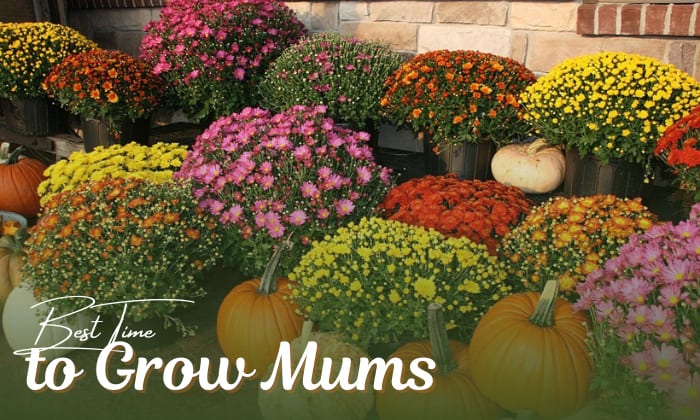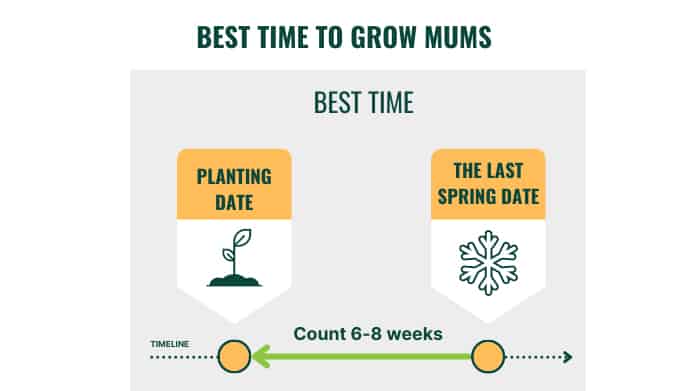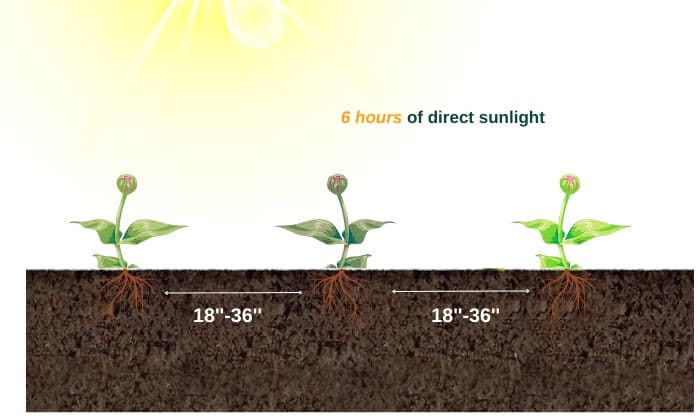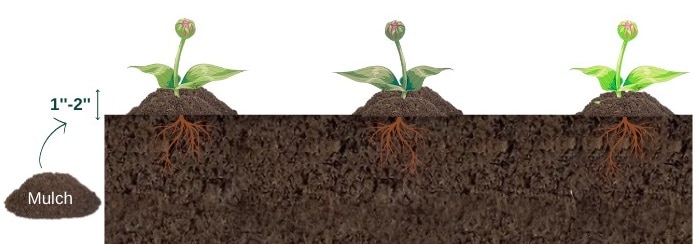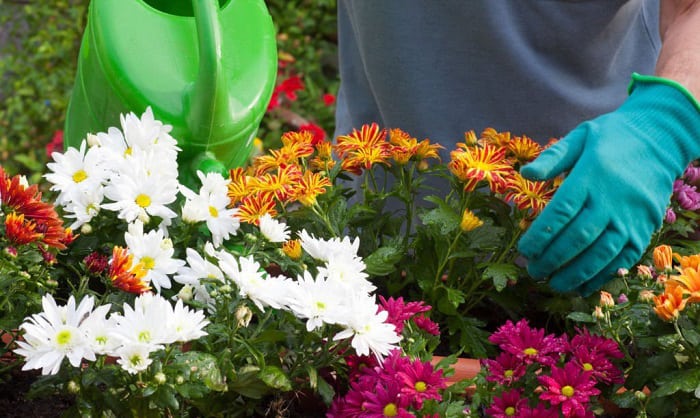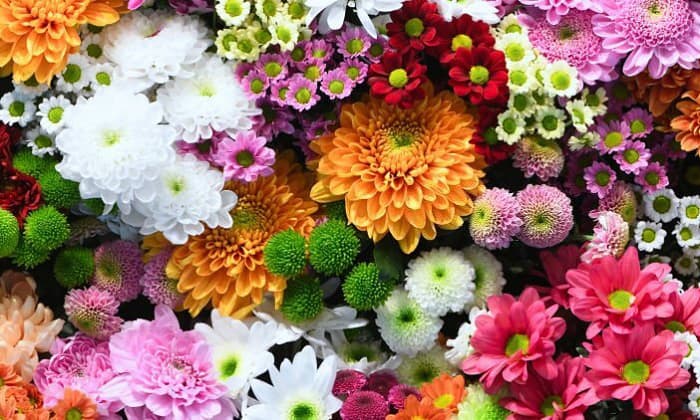Mums, otherwise known as chrysanthemums, are always a delight to see. With their colorful blooms and varying shapes, they can brighten up the atmosphere in any home. If you are thinking, “When is the best time to plant mums?” you are absolutely correct as one of the first things to consider when growing mums is the right timing.
Most mums are perennials that are typically planted in spring, from March to May. Planting during this season gives them plenty of time to establish roots in preparation for winter.
You can also plant mums in the fall, at least six weeks before the first frost, and that could be in September or in October, depending on your location.
Table of Contents
Best Time to Grow Mums
Mums show off their beautiful blooms in the fall, but people typically plant them in spring to give them several months to strengthen their root systems and higher chances of surviving in the winter. If growing from seeds, you can start sowing 6 to 8 weeks before the last spring frost in your area.
However, if you really want to decorate your garden by planting autumn mums, you need to plant mums in the ground 6 weeks before the first fall frost.
How to Plant?
When choosing chrysanthemums for planting, it is recommended to grow the hardy garden varieties rather than the florist varieties as the former are able to withstand harsh winters better than the latter.
Below are some planting guidelines you can take note of:
- Purchase mums from your local nurseries or garden centers to ensure that the variety you will grow is suitable for your region. This is crucial, especially if you are planning to plant mums outside and expose them to local weather conditions.
- Select plants with unopened flower buds rather than those fully opened to enjoy the flowers much longer.
- Chrysanthemums need full sun to thrive. Plant them in a spot that receives at least 6 hours of direct sunlight
- Plant them in rich, well-drained soil and water thoroughly.
- Good air circulation is important, so it is best to plant them about 18 to 36 inches apart, depending on the size of the variety you are growing.
- Place 1 to 2 inches of mulch at the base of the plant to control weeds, but add another inch if you are planting fall mums to protect them during winter.
How to Take Care of Mums?
Mums are great for beginners as their care is relatively straightforward. These plants are winter hardy, surviving temperatures as low as -20 degrees Fahrenheit in states under planting zones 5 to 9, such as in Ohio, Misouri, North Carolina, and Illinois.
In areas under zone 4 and colder, such as certain cities in Michigan, garden mums might not be able to survive the cold and are treated as annuals. However, if they are planted in pots, you may be able to overwinter them indoors rather than outside.
Here are some ways to take good care of your mums:
- Mums love water. Water them frequently, especially in the summer season, as too little water halts their growth. Make sure to soak the soil thoroughly during irrigation.
- Fertilize regularly using a balanced NPK fertilizer for healthy growth, but stop once flower buds start to emerge. Once the buds are set, you can then switch to a high-nitrogen fertilizer.
- Stake the plant if it’s very tall and use cloth frames to protect mums against harsh weather.
- During winter, spread about 4 to 6 inches of mulch around the base of the plant to insulate their roots.
- After they die, mum flowers and foliage can be removed to promote the growth of new sets of leaves and buds in the coming spring.
Frequently Asked Questions
What are the types of mums?
In general, mums are classified as garden mums or florist mums, depending on their hardiness, but there is another set of classification which is based on the type and shape of flowers.
- Anemone – they have flat rows of florets around the edge and a bunch of raised florets at the center. Popular varieties are Dorothy Mechum and Purple Light.
- Decorative – they are commonly used in floral arrangements and have long, overlapping petals. Popular varieties are Fireflash and Coral Charm.
- Irregular Incurve – they have large blooms with florets curving inwards and a fully closed center. Popular varieties are Luxor and Blushing Bride.
- Intermediate Incurve – they have partially incurved petals and the blooms appear loose and more open. Popular varieties are Apricot Alexis and Candid.
- Regular Incurve – they have a ball-shaped appearance with incurving petals. Popular varieties are Gillette and Heather James.
- Pompom – they appear similar to regular incurve varieties and are numerous in colors, from bronze to burgundy or green and white. Popular varieties are Rocky and Lavender Pixie.
- Quilled – they look spiky due to their long, tubular petals. Popular varieties are Seatons Toffee and Mammoth Yellow Quill.
- Single and Semi-Double – If you want flowers that resemble daisies, these are it. Popular varieties are Rage and Crimson Glory.
- Spider – The tips of these flowers form a curve at the end. Popular varieties are Evening Glow and Symphony.
- Spoon – they are great for containers and have a spoon-like shape at the end. Popular varieties are Kimie and Fantasy.
- Reflex – they have big petals that need staking. Popular varieties are White City and Champion.
- Thistle – they have long, wispy florets that may be flat, twisted, or drooping. Popular varieties are Cisco and Orange Spray.
- Unclassified – these chrysanthemums do not fit into any of the aforementioned categories.
Do mums come back every year?
The garden variety is considered perennial and can come back after winter, provided it is given the right growing conditions and protected from extreme cold. The decorative, or florist varieties, on the other hand, are potted mums that are considered as annuals and will likely die after one blooming season.
Can you plant potted mums in the ground?
Yes. Simply cover the plant roots but not the crown with soil. You’ll have to remove the flowers before transplanting though, or the mums will send its energy to the flowers and not the roots.
Are chrysanthemums annual or perennial?
Chrysanthemums are considered as perennials in zones 5 to 9 but are grown as annuals in zones 4 and colder. There are, however, certain varieties like Mammoth Daisy that are winter hardy and can be grown in areas under zone 3.
Conclusion
Mums are a fall garden favorite as they remain blooming when most summer flowers have already gone out. Their bright colors and interesting shapes bring life to any place where they are planted. Hence, you should start planning and check when is the best time to plant mums in your area
Related posts about the flower planting schedule:

Hi, I am William – Floridayards’ digital content creator. My job is to find answers to all your concerns with thorough research and our team’s expert advice. I will also bring you honest reviews on the best products and equipment for raising your beautiful garden. Please look forward to our work!


